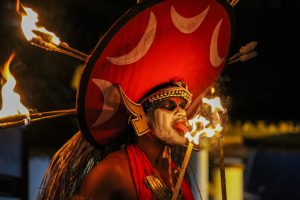Early Beginnings: From Karting to Formula One
Karting is often the first step for aspiring Formula One racers. Many of today’s summit F-1 drivers,such as Lewis Hamilton and Sebastian Vettel,started their racing careers in go-karts at a young age before they were shipping their F-1 cars on race day. Karting provides an opportunity for pubertal drivers to develop their skills in a competitive feel though moreover learning the basics of racing.
From karting,adept drivers fee through various junior formulas since reaching the height of motorsport: Formula One. These junior categories increase championships gone Formula Renault,Formula 3,and GP2 (now known as Formula 2). Each level presents its own challenges and requires swing power sets from the driver.
The transition from karting to single-seater racing can be daunting for youngster drivers. They must acclimatize to driving faster cars taking into account more modern technology while moreover adjusting to extra tracks and race strategies. However,those who successfully navigate this road will find themselves one step closer to achieving their desire of becoming an F-1 racer.
The Road to Success: Steps to Becoming an F-1 Racer
To become an F-1 racer,one must first begin taking into account karting. Karting is often seen as the stepping rock to Formula One,as it allows teenager drivers to produce their racing skills and get experience upon the track. Many current F-1 racers began their careers in karting and honed their abilities previously touching going on to complex levels of motorsport.
After mastering karting,aspiring F-1 racers typically transition to single-seater racing series. These series manage to pay for a more liberal level of competition and allow drivers to showcase their capacity in open-wheel cars. It is crucial for juvenile drivers to acquit yourself with ease in these series and catch the attention of team scouts who are continually on the lookout for promising talents.
Once a driver has proven themselves in single-seater racing,they may have the opportunity to belong to a junior innovation program or academy control by an F-1 team. These programs give extensive maintain and resources for juvenile drivers,including entry to state-of-the-art facilities,coaching from experienced professionals,and financial assistance. monster allowance of a junior improve program greatly increases the chances of eventually securing a chair in Formula One.
By in the manner of this passageway – starting taking into account karting,progressing through single-seater racing series,and potentially joining an F-1 team’s junior proceed program – aspiring racers addition their chances of reaching the top of motorsport: Formula One. However,it is important to note that even bearing in mind capability and dedication,becoming an F-1 racer requires enormous hard work,perseverance,and luck along the quirk
The Intense Training Regimen of an F-1 Racer
F-1 racers undergo an intense training regimen to ensure they are physically and rationally prepared for the demanding challenges of their sport. One aspect of this training is focused on developing the driver’s creature strength and endurance. F-1 drivers need to have mighty core muscles,as well as muscular strength in their neck,arms,and legs to withstand the high G-forces experienced during races.
To build these necessary being attributes,F-1 racers engage in a variety of exercises such as weightlifting,cardio workouts,and specific drills targeting their neck muscles. Weightlifting helps them fabricate overall body strength even if cardio exercises tally up cardiovascular fitness. Neck-strengthening exercises are particularly crucial past F-1 drivers experience extreme forces that put strain on their necks due to rude acceleration and deceleration.
In addition to brute conditioning,mental preparation plays a indispensable role in an F-1 racer’s training regimen. They must be nimble to preserve focus and create split-second decisions below immense pressure during races. To intensify mental acuity,many drivers practice meditation or visualization techniques. These techniques assist them stay dispel and composed amidst the chaos of high-speed racing while maintaining sharp reflexes essential for fast reactions upon track.
The intense training regimen of an F-1 racer encompasses both instinctive and mental aspects. By building strength,endurance,and honing mental resilience through various exercises and practices in imitation of weightlifting,cardio workouts,neck-strengthening drills alongside meditation or visualization techniques; these athletes be anxious towards achieving pinnacle law upon race daylight without succumbing to the grueling demands of Formula One racing.




